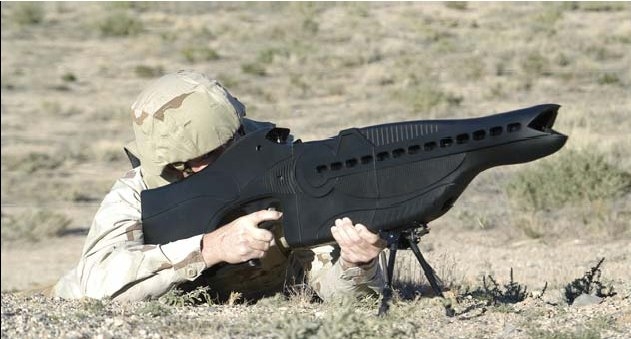Samarai UAV Gets Shrinkage:
We heard some rumors back in 2009 that Lockheed Martin’s SAMARAI UAV project had been killed off. In fact, Lockheed Martin themselves apparently confirmed that they had stopped developing the UAV since AeroVironment won DARPA’s nano air vehicle development contract to put some polish on their robot hummingbird. So, I’m not entirely sure what the background to this video is, but it shows a much more recent (and smaller, with a wingspan of only 12 inches) version of the SAMARAI.
The SAMARAI is certainly simple (at least, compared to AeroVironment’s UAV), and as the video shows, you can just chuck it into the air, and it can land on the ground and then take off again without needing much in the way of space or infrastructure. On the other hand, I’m not sure exactly how you’d go about mounting something like a camera on a spinning airframe (maybe sync the shutter speed with the rotation speed?), and in order to operate effectively indoors, the SAMARAI would benefit from some level of resilience to impacts. At this point, it seems as though a collision with a wall or doorframe would probably knock the SAMARAI a tad askew, causing it to spin out of control and decapitate everyone in the room.
Or maybe that’s a feature.
In any case (and we’ve pinged Lockheed Martin about the status of this project), I’m happy to see that they seem to have kept working on the SAMARAI. It was a good idea when trees came up with it, and it’s a good idea for flying robots, too. I’m definitely looking forward to seeing the 10 gram, 6cm, jet powered 6000 rpm final product.
We heard some rumors back in 2009 that Lockheed Martin’s SAMARAI UAV project had been killed off. In fact, Lockheed Martin themselves apparently confirmed that they had stopped developing the UAV since AeroVironment won DARPA’s nano air vehicle development contract to put some polish on their robot hummingbird. So, I’m not entirely sure what the background to this video is, but it shows a much more recent (and smaller, with a wingspan of only 12 inches) version of the SAMARAI.
The SAMARAI is certainly simple (at least, compared to AeroVironment’s UAV), and as the video shows, you can just chuck it into the air, and it can land on the ground and then take off again without needing much in the way of space or infrastructure. On the other hand, I’m not sure exactly how you’d go about mounting something like a camera on a spinning airframe (maybe sync the shutter speed with the rotation speed?), and in order to operate effectively indoors, the SAMARAI would benefit from some level of resilience to impacts. At this point, it seems as though a collision with a wall or doorframe would probably knock the SAMARAI a tad askew, causing it to spin out of control and decapitate everyone in the room.
Or maybe that’s a feature.
In any case (and we’ve pinged Lockheed Martin about the status of this project), I’m happy to see that they seem to have kept working on the SAMARAI. It was a good idea when trees came up with it, and it’s a good idea for flying robots, too. I’m definitely looking forward to seeing the 10 gram, 6cm, jet powered 6000 rpm final product.















